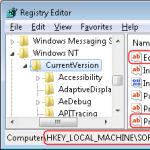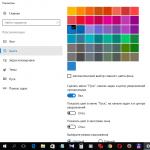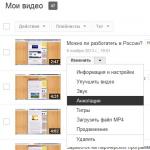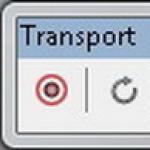Correct answers are marked with a + sign
1.When did the Windows operating system appear?
2. What was inconvenient about the MS DOS operating system?
Black screen, type a command from the keyboard...
There are a lot of commands to remember...
Non-graphical interface....
graphical interface....
objects in the form of icons...
3. What modules are included in the operating system?
Basic kernel, command processor...
Drivers, utilities, base kernel...
Command processor, drivers, utilities...
drivers, utilities, base egg...
drivers, utilities, base kernel...
4. What operating system was on the first computers?
5. What is the name of a file created using a Windows application program?
Document
root directory
6. What is an "interface"?
User interaction with computer tools
interaction of a magnetic disk with computer tools
interaction of the keyboard with computer tools
user interaction with a floppy disk lying on the table
user-teacher interaction
7. What specification (full name) does the ABSTRACT file have, which is located in the PETRUC folder, which is located in folder 10-A, on drive A:?
A:\10-A\PETRUC\ABSTRACT
A:\10-A\PETRUCK
A:\10-A\ABSTRACT\PETRUCK
A:\ABSTRACT\PETRUCK
A:\10-A\ABSTRACT
8. What is an "address" on a computer?
The path to the file
A sequence of drive name and folder name that leads to the file
file name and extension
list of computer disks
full file name
9. How can root directories (drives) be designated?
10. What are the root directories on a computer?
Magnetic disks
Optical (laser) discs
Magneto-optical disks
document files
user directories
11. What is indicated by the file name and extension?
Purpose and file type
purpose and file name
file type and extension
file size and type
file name and size
12. What does a file name consist of?
File name and type
Name and extension
last name and first name
type and extension
name and title
13. What is the purpose of a file structure?
To store information in external memory
To download programs
For editing texts
To find what you need
To work faster
14. What characters are allowed in a file name?
d 3 @ \ & i 2 / *
+ % d & () e r
%d&()e< >r
U p @ 3 $ % (1 _
15. What extension do executable files have?
Com, .exe, .bat
Pic, .sys, .doc
Com, .exe, .sys
Exe, .txt, .doc
Bmp, .sys, .exe
16. How many bytes can a file name have?
17. What extension do Word text documents have?
18. What does using the Windows operating system give the user?
New powerful information processing capabilities
Using a wide selection of different fonts
Standard controls for all programs
"Windows" programs run under MS DOS
Convenient use of the MS DOS operating system
19. What is a folder?
Storage space for document files
Executable file
Text Document
Old catalog
). In this case, some begin to worry and look for all sorts of reasons and ways to eliminate freezes.
I will not repeat myself and write why this happens, because... The article is not about this and I have already given a link to solving problems above.
I’d rather show you one interesting way that will help you check your system for errors.
Few people know, but in Windows OS there is one useful “little thing” that can search And correct errors in the system itself. Moreover, it will not touch third-party programs, but will only check its system files. This is useful and interesting because many do not think that the reason may be hidden in the system itself, but feverishly begin, and so on. All in all . Yes, this is useful and can lead to good results, but with all these actions it is good to remember what I will write about below.
I already wrote a little about this function in the article, which can also arise due to a failure in system files, which are often forgotten. But still, within the framework of this article, I will repeat...
So, let's run:
and enter it into sfc /scannow:

The system check will begin:

All you have to do is wait.
For those interested, here is a description of the command and keys.
sfc
Where:
/scannow – immediately scans all protected system files.
/scanonce – scans all protected system files once at the next system boot.
/scanboot – scans all protected system files at every boot
/REVERT – Sets the initial parameters to default.
/ENABLE – Enable normal operation of Windows file protection
/PURGECACHE – Clear file cache and check files immediately
/CACHESIZE=x – Sets the file cache size
In the command line (Start -> Run -> cmd) we write the command sfc / and the desired key.
After the check is completed, the system will report the results and ask you to reboot.
That's all I have. Thank you all for your attention.
Test on the topic: “Operating system. Windows Interface"
1. Operating system is:
A) application program;
B) system program;
B) programming system;
D) text editor.
2. A driver is:
A) computer device;
B) a program for working with computer devices;
B) application program;
D) programming language.
3. The program running under Windows is called:
A) application;
B) document;
B) environment;
D) somehow differently.
4. Loads the operating system from the disk into RAM:
A) BIOS;
B) driver;
B) operating system loader;
D) service program.
5. The properties of the Desktop are:
A) design of the desktop;
B) shortcuts, folders, files located on the Desktop;
C) date of manufacture of the Desktop;
D) the name of the user working with the Desktop.
6. You can activate or select a file or folder:
A) double click;
B) click;
B) by dragging;
D) pointing.
7. On the taskbar there are:
A) buttons for minimized programs;
B) only labels;
B) Start button;
D) the Start button and icons of minimized and running programs.
8. The main menu opens:
A) by clicking on the My Computer icon;
B) the Start button;
B) context menu;
D) by clicking on the Taskbar.
9. A window is:
A) work area;
B) the main means of communication with Windows;
B) Windows application;
D) Windows event.
10. Where is the window menu bar located:
A) from above;
B) from below;
B) left;
D) on the right.
11. In the application window there is:
A) contents of the folder;
B) a working program;
B) file structure;
D) file contents.
12. The dialog box opens:
A) at the request of the user or as necessary by the application;
B) triple click on the object;
B) when you click on a special icon;
D) only after the computer has finished working.
13. To resize the window evenly in width and height, you must:
A) pull the horizontal frame;
B) pull the vertical frame;
B) pull the corner;
D) pull the title.
14. Button is used for:
A) closing the window;
B) window restoration;
B) closing the window;
D) opening windows.
15. A set of system and utility programs is called:
A) text editor;
B) graphic editor;
B) operating system;
D) driver.
16. A utility is:
A) operating system;
B) application program;
B) service program;
D) basic input/output system.
17. BIOS is:
A) driver program;
B) utility program;
C) a program that tests the computer after it is turned on;
D) application program.
18. When you turn on the computer, the processor accesses:
A) RAM;
B) hard drive;
B) ROM;
D) floppy disk.
19. You can turn on the program or open a document:
A) click;
B) double click;
B) by dragging;
D) freezing.
20. A desktop is:
A) file;
B) the central part of the screen;
B) active part of the screen;
D) folder.
21. In the main menu there is an arrow on the right next to some items:
A) launches the application;
B) collapses this item;
B) opens a submenu;
D) opens the window.
22. Icons for minimized programs are located:
A) on the desktop;
B) in the Main Menu;
B) on the taskbar;
D) on the display panel.
23. Button is used for:
A) closing the window;
B) collapsing the window;
C) window restoration;
D) changes in window size.
24. Where is the window title located:
A) from below;
B) from above;
B) on the right;
D) on the left.
25. The dialog box is intended for:
A) viewing the contents of the folder;
B) asking the user for some parameters;
C) application operation;
D) working with files.
26. To view the contents of a window that does not fit into the work area, you need to use:
A) title;
B) scroll bar;
B) menu bar;
D) collapse button.
27. In the folder window there is:
A) contents of the folder;
B) a working program;
C) a visual representation of the file structure;
D) file contents.
28. Shutdown of work with the computer occurs with the command:
A) Start\Programs\Shutdown;
B) Start\Shutdown;
B) press Reset;
D) Ctrl+Alt+Delete.
KEYS
Even the most polished and most secure operating system is by no means guaranteed against failures perceived by the user as errors. Particularly annoying are unknown and unexpectedly occurring errors, sometimes fraught with extremely unpleasant consequences.
It is not difficult to imagine the emotions of a person working on a complex document that is lost as a result of a Windows system crash. To avoid such problems, it is better to prepare for them in advance. And to do this, you need to be aware of how Windows 7 OS is checked for errors. Let us consider separately two serious questions related to the stated topic:
- Checking Windows system files and registry.
- Monitoring the status of your computer's hard drive.
 Old-timers of the computer world well remember the utilities of the world-famous Peter Norton, not only the author of excellent books, but also the creator of programs under the “Norton utilities” brand. The first versions of these programs worked even before the advent of Windows - in the then popular MS DOS operating system. These utilities made it possible to detect the presence of errors on the hard drive and identify the presence of other DOS problems. We will be interested in similar tools for Windows.
Old-timers of the computer world well remember the utilities of the world-famous Peter Norton, not only the author of excellent books, but also the creator of programs under the “Norton utilities” brand. The first versions of these programs worked even before the advent of Windows - in the then popular MS DOS operating system. These utilities made it possible to detect the presence of errors on the hard drive and identify the presence of other DOS problems. We will be interested in similar tools for Windows.
Files and Registry
Checking OS files can be done in two ways: either using standard Windows tools or using third-party software. The OS has built-in file monitoring tools. To use their capabilities, you need to open a command line window and type the sfc command in it with the /scannow parameter, like this:
As a result, system files will be scanned to detect errors in them. The result will be displayed immediately in the command line window.
 The information obtained can be analyzed (at least using the Internet), which can be useful for determining the degree of wear and tear of the OS and equipment. During operation, the program will try to correct all detected violations in system files on the disk.
The information obtained can be analyzed (at least using the Internet), which can be useful for determining the degree of wear and tear of the OS and equipment. During operation, the program will try to correct all detected violations in system files on the disk.
Additional service, higher scanning quality and reliability of adjustments are provided by third-party software.
For example, the same package “Norton Utilities” (NU) for Windows. Although this tool is the most popular and powerful software package for dealing with OS and computer malfunctions, it still costs a lot of money. Especially in its “professional” configuration. Nowadays, you can find many free analogues of this creation on the Internet.
The Windows registry is the very place where, in addition to the information needed by the OS, a lot of all sorts of rubbish and garbage accumulates. Periodic cleaning of the registry is our direct responsibility. For this purpose, it is worth installing and periodically running the time-tested CCleaner utility (although NU also copes well with this task). Search for it online and download it.
HDD
The appearance of errors in the file structure on a hard drive is caused by wear on the disk surface, failures in Windows disk services (drivers), and positioning errors of the laser subsystem of the hard drive. You can check and disinfect your hard drive using methods similar to the previous ones. We'll look at the easiest way - running the standard disk error checking program that comes with Windows. For this:
- Open the “My Computer” shortcut, select the icon of any of the partitions (for example, “Local Disk C”).
- Open the context menu with the right mouse button.
- Select Properties. A window with tabs will open.
- Go to the "Service" tab
- Click on the “Run check” button.
 The program will examine the partition and fix any problems. Perform the same operation with the remaining partitions.
The program will examine the partition and fix any problems. Perform the same operation with the remaining partitions.



